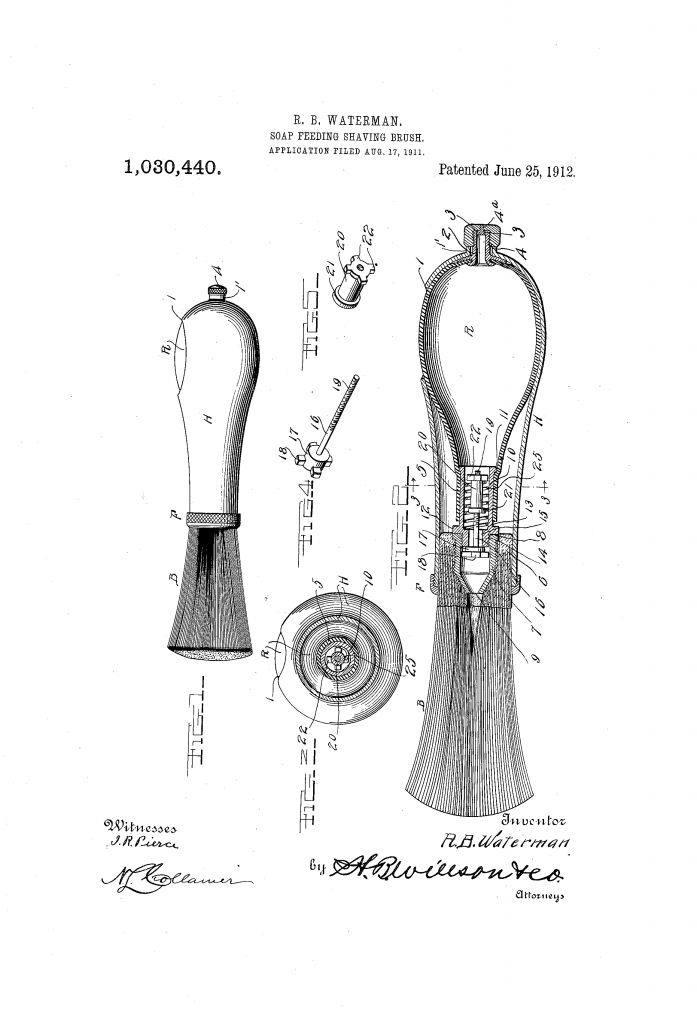As I mentioned last week, the self-feeding shaving brush is an idea that won’t die. But while most of them, from 1849 onwards, have used a piston to force soap into the knot, Richard Burton Waterman’s soap-feeding shaving brush was different.
I mean, the idea of pushing soap straight into the knot is the same. But he did it differently. Possible even better.
But first, let us see what Richard was trying to achive:
This invention relates to fountain brushes, and more especially for those intended for shaving; and the object of the same is to produce a shaving brush having a soap reservoir in its handle, and between the handle and bristles an automatically operating check valve which will permit the expulsion of just one charge of shaving soap when the handle is squeezed.
From US patent 1,030,440
So Richard wanted to prevent the shaver getting too much soap in the knot. Apparently there is such a thing as too much lather… this was news to me.

The soap reservoir (R) was a rubber bulb, encased in an hollow handle (H). An opening (I) in the handle let the shaver squeeze the bulb. Each squeeze would squirt out a measured amount of liquid soap into the knot (B).
The way the liquid soap is measured out is interesting. Well, at least I find it interesting, but them I like mechanical thingamajigs.
The heart of the device is the valve. This is seen in figure 2, with more detailed views in figures 3, 4, and 5. It has two valve heads and a return spring.
When the user squeeze the bulb the pressure forces the valve to open, and soap can flow past the valve head 17 and into the knot. As the pressure build, the second valve head 21 will close the valve. No more soap can flow through the valve. When the pressure is released, the return spring 25 will return the valve to the starting position. Simple, straightforward, and easy to understand.
The amount of soap can be adjusted by screwing the second valve head up or down on the valve stem 16, which is threaded. This also adjust the spring pressure, so a bit of trial and failure must be expected in order to get the setting just right.
While I do think that the whole concept of a fountain shaving brush is faulty, I do have to admit that Richard’s soap-feeding shaving brush is one of the more interesting self feeding brushes I’ve seen the patent for. The added mechanical gadgetry at least tries to address one of the problems with such a brush.
As with most of the inventions I discuss, the patent is long expired. So anyone who wishes to make a soap-feeding shaving brush for sale can, metering valve and all. I’m just not sure why anyone would want to do that.
You can read the full patent for the soap-feeding shaving brush at Google Patents.

Pingback: Soap-feeding shaving brush. - Razors n Blades the shave that saves